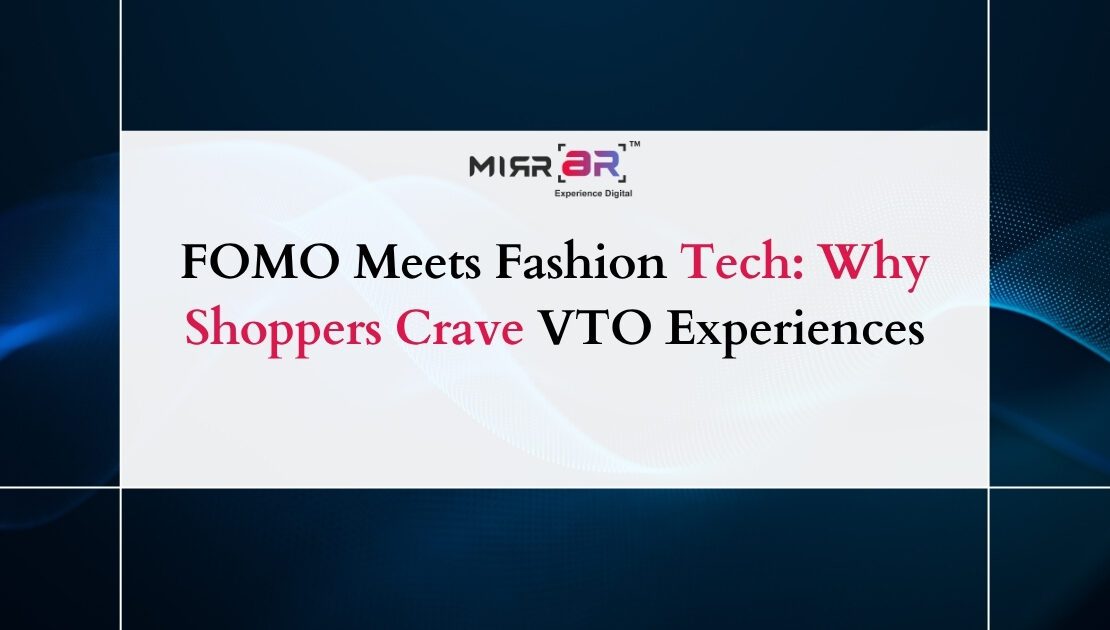
In the fast-paced digital era where instant gratification, visual appeal, and exclusivity drive purchasing decisions, the Fear of Missing Out (FOMO) has become a powerful emotional trigger in eCommerce. When combined with the cutting-edge technology of Virtual Try-On (VTO), it creates a magnetic pull for consumers, offering them an immersive, real-time, and highly personalized shopping experience. From Snapchat filters to AR-powered fashion apps, VTO is transforming how fashion brands interact with their audiences—and FOMO is the fuel making it irresistible.
Understanding FOMO in the Digital Age
FOMO is more than just a buzzword. Psychologically, it stems from a desire to stay socially connected and be part of experiences that others are enjoying. In the context of fashion, it’s about staying on trend, owning the newest styles, and being perceived as stylish and up-to-date.
With social media platforms like Instagram and TikTok constantly showcasing influencer hauls, trending pieces, and limited-edition collections, consumers often feel compelled to act fast or risk being left behind. This emotional urgency fuels quicker purchase decisions and makes engaging, tech-powered tools like VTO even more effective in converting interest into action.
What is Virtual Try-On (VTO)?
Virtual Try-On allows users to digitally try fashion items like sunglasses, earrings, makeup, shoes, or even entire outfits through augmented reality (AR) or artificial intelligence (AI). Whether through a smartphone camera or desktop interface, VTO overlays digital items onto a live or uploaded image of the shopper, offering a realistic idea of how the item will look on them.
Unlike static product photos, VTO offers interactivity and realism—helping users visualize fit, style, and color with ease. This bridges the gap between online and offline shopping, making the experience more trustworthy and enjoyable.
The Intersection of FOMO and VTO
1. Instant Gratification Fuels Impulse Buying
VTO satisfies the modern consumer’s need for instant results. When shoppers can instantly see how a product looks on them, they feel more confident and excited about their choices. This real-time validation triggers FOMO—they don’t want to miss out on something that already looks so good on them. Combined with time-limited offers or “only a few left in stock” messages, this leads to quick decisions and higher conversion rates.
2. Social Sharing Amplifies Reach
One of the most powerful outcomes of VTO is that it’s inherently social-media-friendly. Shoppers love to share how they look in different styles—even if they haven’t purchased them yet. Brands can encourage users to post their try-ons, tag friends, or participate in AR challenges. When people see their peers virtually trying on fashion, FOMO kicks in, and they want to be part of the fun.
How Brands Are Leveraging FOMO with VTO
1. Limited-Edition AR Filters
Brands like Gucci, Dior, and Nike are already rolling out limited-edition AR try-on filters for sunglasses, shoes, or cosmetics. These exclusive virtual experiences are available only for a short time, creating urgency and buzz that taps into FOMO. Shoppers who miss out on the VTO experience might also miss the opportunity to buy.
2. Influencer-Driven Campaigns
Influencers play a huge role in stoking FOMO. When they share virtual try-ons, their followers often feel compelled to try the same products. By collaborating with influencers to showcase VTO features, brands create aspirational content that’s both engaging and emotionally compelling.
3. Gamification and AR Events
Fashion tech is becoming more interactive. Some brands are launching VTO-based games or virtual fashion shows that require participation to access special discounts or early product drops. These experiences aren’t just fun—they create a sense of exclusivity that fuels FOMO among loyal fans and newcomers alike.
Benefits for Shoppers and Brands
For Shoppers:
- Confidence in purchasing decisions
- An entertaining, engaging shopping journey
- Easy social sharing and peer validation
For Brands:
- Higher conversion rates
- Reduced product returns
- Increased brand engagement and loyalty
- Viral marketing via social sharing and influencer buzz
Addressing the Ethical Side of FOMO
While leveraging FOMO can drive impressive results, brands must strike a balance. Over-relying on scarcity or urgency can create negative emotions if not done thoughtfully. Instead, brands should focus on creating genuinely enjoyable, useful, and personalized experiences through VTO—letting the tech speak for itself while using FOMO as a subtle motivator rather than a pressure tactic.
The Future of VTO-Driven FOMO
As AR and AI technologies continue to evolve, VTO will become even more immersive—incorporating 3D body scanning, voice-driven styling assistants, and fully digital wardrobes. With personalization at the core, shoppers will crave these experiences not just for utility, but for the emotional satisfaction of staying on trend, being seen, and feeling confident. The fashion industry is no longer just about what you wear—it’s about how you experience it. And FOMO is the emotional glue connecting shoppers to these futuristic experiences.
Conclusion
Virtual Try-On technology and FOMO are a perfect pairing in the digital shopping ecosystem. Together, they create emotional resonance, visual delight, and a sense of urgency that today’s consumers respond to. For fashion brands, embracing this duo is no longer optional—it’s essential to winning hearts, clicks, and conversions in an era where experience is everything.
